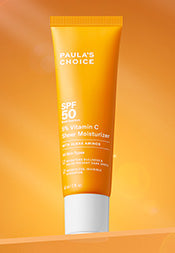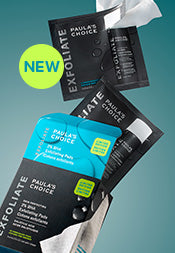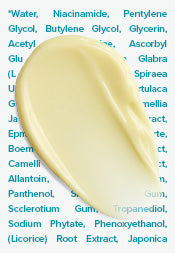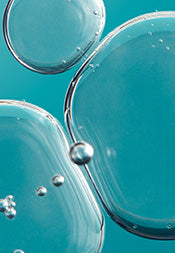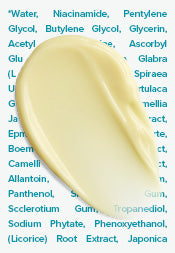Antioxidants for Better Sun Protection
Most people know that sunscreen is an essential skincare product in reducing the risk of skin cancer and premature skin ageing, but there’s an SPF-enhancing sidekick that’s often overlooked — antioxidants. We reveal the science behind how antioxidants boost your sunscreen’s effectiveness, plus tips to keep your skin looking young, healthy, and vibrant.
How Antioxidants Help Boost Skin's Sun Defence
As great as broad-spectrum sunscreen is, it doesn’t offer 100% protection from the harmful rays we are exposed to daily, especially in the Singapore heat. For example, a sunscreen with SPF 15 keeps out approximately 93% of bad ultraviolet (UV) rays, SPF 30 equates to 97% protection, and SPF 50+ garners about 98%. Another factor is that most people don’t apply (or reapply) sunscreen as much as they should to get sufficient protection.
The residual UV exposure from the rays that get through can trigger free-radical damage that accelerates skin ageing in the form of wrinkles, dark spots, loss of firmness, and other issues. Even if you can’t see or feel the damage, it’s happening, albeit at a deeper level, and the results will show up over time. This doesn’t mean sunscreen isn’t effective or worth using — it absolutely helps protect the skin from sun damage—but even superheroes need a little help every now and then.
Antioxidants to the Rescue!
Antioxidants can help compensate for the sunscreen’s inherent shortcomings (and for the lack of application) by neutralising the free-radical damage that sun exposure causes. They literally play a defensive role by diffusing the effects of the bad rays that make it through your sunscreen. Not only that, but antioxidants also help protect the skin from other sources of free radicals, such as high-energy visible (HEV) light and blue light from your cell phone. Left unchecked, this damage can lead to skin problems no one wants.
Many antioxidants also have skin-calming properties (environmental exposure stresses skin) and play a formulary role by helping to stabilise the sunscreen while also boosting its effectiveness.
Simply put: Antioxidants supercharge your sunscreen by ensuring maximum protection and supplemental repair for your skin.
Which Antioxidants Are Best?
There really is no single best antioxidant; rather, there are hundreds of amazing antioxidants that complement the anti-ageing benefits of sunscreen. Here are just a few of the antioxidant-rich options that have substantial research supporting their benefits in protecting the skin from harmful UV light:
- Coffee fruit extract contains antioxidant compounds known as chlorogenic acids that can reduce the visible effects of sun exposure, like fine lines, wrinkles or cellular damage to the skin, by stopping the cascade of redness-triggering damage UV light causes. Find coffee fruit extract in our DEFENSE Antioxidant Pore Purifier.
- Green tea contains a compound known as epigallocatechin gallate (EGCG), a potent antioxidant that can quench free radicals generated by exposure to UV light. Left unchecked, these rogue molecules lead to multiple signs of ageing. EGCG is also included in our DEFENSE Antioxidant Pore Purifier, which is ideal to apply under sunscreen.
- Kiwi fruit extract is a rich source of skin-loving vitamin C and contains lutein, an important antioxidant for skin that ramps up its environmental defences, helping the antioxidants that naturally occur in the skin to work better. Look for Kiwi fruit in our DEFENSE Essential Glow Moisturizer SPF 30.
- Vitamin E (tocopherol) is a classic, well-studied antioxidant that is brilliant for round-the-clock skin protection. In the presence of UVA light—the sun’s most harmful rays that could cause ageing — Vitamin E reduces oxidative by-products in the skin and enhances the benefits of glutathione, the body’s “master antioxidant” that’s also present in the skin. Tocopherol is one of the many antioxidants in our DEFENSE Nightly Reconditioning Moisturizer.
- Liquorice root is a skin-soothing antioxidant that also helps improve dull, uneven skin tone. In the presence of UV light, a compound in liquorice root known as licochalcone-A quiets the firestorm of surface inflammation environmental exposure ignites. All of these benefits are why we added liquorice root to several products in our DEFENSE Anti-Pollution skincare line.
When & How to Use Antioxidants Daily
The easiest way to get improved environmental protection is to apply an antioxidant-rich sunscreen every morning.
You can also use an antioxidant serum before applying your sunscreen. (Sunscreen should always be your last skincare step in the morning; serum and moisturizer can be layered beneath based on their textures.) When it comes to the topical application of antioxidants, the skin can’t get enough, so don’t worry about overdoing it.
Additionally, consider applying a moisturizer loaded with antioxidants at night to help further repair signs of sun damage from rays that may have gotten through.
All of the above will help provide a synergistic defence and help your skin stay supple, healthy, even-toned, and vibrant.
Keep in mind, however, that this is only the tip of the iceberg for SPF-boosting antioxidants and ideally it’s the more, the merrier when working them into your skincare routine.
Shop our antioxidant packed Defense range.
References for this information:
Molecules, November 2018, ePublication
Frontiers in Pharmacology, August 2018, ePublication; and April 2018, ePublication
Mechanisms of Ageing and Development, June 2018, pages 123-130
International Journal of Molecular Medicine, January 2018, ePublication
Skin Pharmacology and Physiology, May 2017, pages 81-89
Journal of Photochemistry and Photobiology, August 2018, pages 46-49; August 2016, pages 34–39; and November 2014, pages 36–40
Nutrients, December 2015, ePublication
European Journal of Pharmaceutical Sciences, October 2015, pages 79–89
Regulatory Toxicology and Pharmacology, June 2014, pages 71–77
Biomedical Reports, May 2014, pages 419-423
Journal of the American Academy of Dermatology, November 2012, pages 1,013–1,024; and September 2008, pages 418–425
Clinics in Dermatology, March-April 2009, pages 195-201
Skincancer.org


